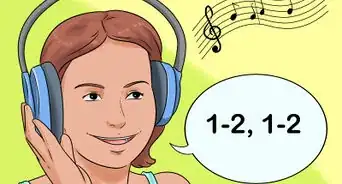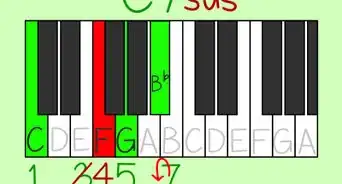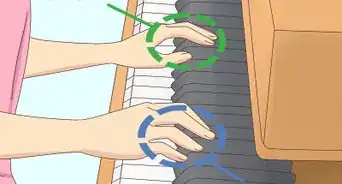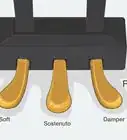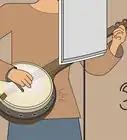This article was co-authored by wikiHow staff writer, Kyle Hall. Kyle Hall works on the content team at wikiHow. He helps manage our team of editors and creates content for a variety of wikiHow projects. Kyle continually looks for new ways to improve the content at wikiHow and make it more helpful and enjoyable for readers. He graduated from Eckerd College in 2015, where he majored in Political Science.
This article has been viewed 575,315 times.
Learn more...
Transposing instruments are those instruments—such as the clarinet, tenor sax, and trumpet—that unlike a piano, are notated at a different pitch than they actually sound. This article will show you how to transpose music written in the key of C, for Bb instruments.[1]
Steps
Understanding the Basics
-
1Know your instrument's transposition. The following are some B-flat instruments:[2]
- Trumpet and cornet
- Tenor and bass sax
- Clarinet and bass clarinet
- Treble clef baritone and euphonium
- Flugelhorn and sousaphone
-
2Know the key to transposition. When a piano player reads a C on the score, the note that we hear is a C. Yet when a trumpet player plays a C on the score, the note that we hear is a Bb. To make music sound right (and to reduce tension in the band) we need to write parts for the transposing instrument so that the trumpet player and the keyboard player are playing in the same apparent key[3] .Advertisement
-
3Start with the key signature. Since a Bb instrument sounds one whole tone lower than what is written, you must raise every note written for that instrument by one whole tone. The easiest way to do that is to start by writing in the correct key signature for that instrument.
- Let's say the piano part is written in the key of Bb concert pitch. One whole tone up from Bb is C, so you will write your trumpet part in the key of C.
- Conversely, if the piano part were written in the key of C, you would start with a different key signature: D
-
4Start from the concert key and add a whole step to it. The concert key is the key that is actually being heard. When you add a whole step to it, you get the key you will use for your transposing part.[4]
- For example, let's say the concert key is the key of G major. On the chart, find the key of G major (it's the second from the top left). Note that it is written with one sharp, F#. One whole tone up from G is A, so find A major on the chart, and you will see it has 3 sharps: F#, C#, and G#. This is the key you will use for your Bb instrument.
- Sometimes you shift from flats to sharps, or vice versa. For example, if the concert key is F major, with a Bb, one whole tone up from F is G, which is written with one sharp, F#.
- Remember to not just change the key signature, but write the notes one whole tone up as well. For example, if the note on the concert score is "F," the transposed note is "G".
Transposition Examples
| C Instrument | B-flat Instrument |
|---|---|
| C |
D |
| C# or Db |
D# or Eb |
| D |
E |
| D# or Eb |
F |
| E |
F# or Gb |
| F |
G |
| F# or Gb |
G# or Ab |
| G |
A |
| G# or Ab |
A# or Bb |
| A |
B |
| A# or Bb |
C |
| B |
C# or Db |
Community Q&A
-
QuestionI want to make sure I understand. Whatever key the piano music is written in, you raise it a step higher?
 Community AnswerIf you are playing a Bb instrument, yes. Well, you raise it a tone higher. So if written note is a C, you read a D, if a D, an E, if an E, an F# and so on...There's another method you can try if you know the sequence of sharps and flats. It turns out that for transposing up a tone, you either gain two sharps or lose two flats. So if the piano has three flats(Eb major), you play with one flat (F major); if the piano has two flats, you play with none; if it has one flat, you play with one sharp; and if the piano is playing with no sharps or flats (in C), you need to play with two sharps (in D).
Community AnswerIf you are playing a Bb instrument, yes. Well, you raise it a tone higher. So if written note is a C, you read a D, if a D, an E, if an E, an F# and so on...There's another method you can try if you know the sequence of sharps and flats. It turns out that for transposing up a tone, you either gain two sharps or lose two flats. So if the piano has three flats(Eb major), you play with one flat (F major); if the piano has two flats, you play with none; if it has one flat, you play with one sharp; and if the piano is playing with no sharps or flats (in C), you need to play with two sharps (in D). -
QuestionHow do I make notes on songs I hear and then play them on the trumpet?
 Community AnswerYou either need to know the notes' names or how to write music. You can write it down in b flat if you're going to play it yourself. If you can't write or read music, just write down the names of the notes in order, without the length. Since you know the piece, it shouldn't be to hard to replay it.
Community AnswerYou either need to know the notes' names or how to write music. You can write it down in b flat if you're going to play it yourself. If you can't write or read music, just write down the names of the notes in order, without the length. Since you know the piece, it shouldn't be to hard to replay it. -
QuestionHow do I transpose a solo written in C major for trombone?
 Community AnswerThe trombone already reads in the key of C. There is no transposition. You would need to put the notes into bass clef, like the left hand of piano music.
Community AnswerThe trombone already reads in the key of C. There is no transposition. You would need to put the notes into bass clef, like the left hand of piano music.
Warnings
- Be careful make sure you add the correct accidentals, for example in transposing B it should be C# to give a whole tone even though the key signature does not give you this.⧼thumbs_response⧽
References
- ↑ https://opencurriculum.org/5567/transposing-instruments/
- ↑ https://opencurriculum.org/5567/transposing-instruments/
- ↑ https://www.musicnotes.com/now/tips/learn-transpose-music/
- ↑ https://www.upwork.com/nx/signup/?dest=home
- The Professional Arranger/Composer by Russell Garcia
- The Harper Dictionary of Music
- Music Notation—A Manual of Modern Practice by Gardner Read


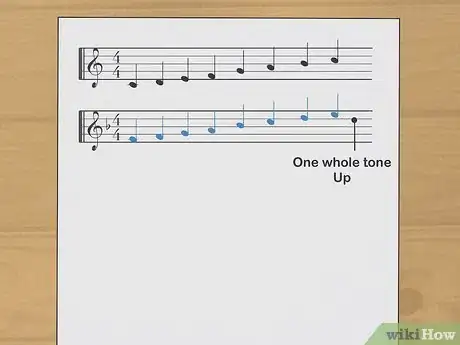
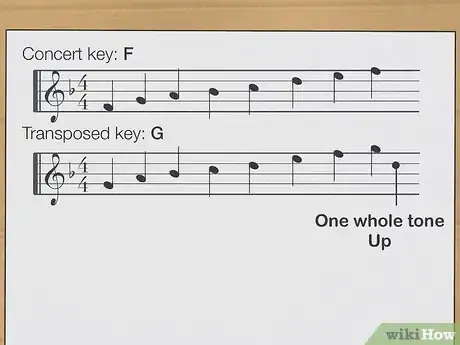

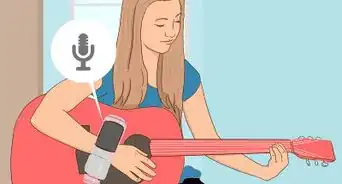
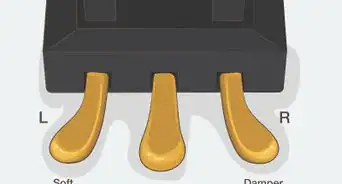
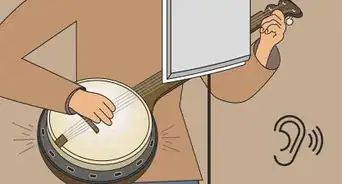
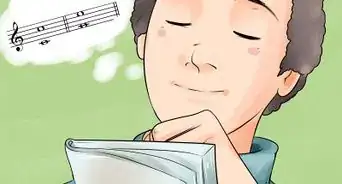

-of-a-Song-Step-9.webp)
